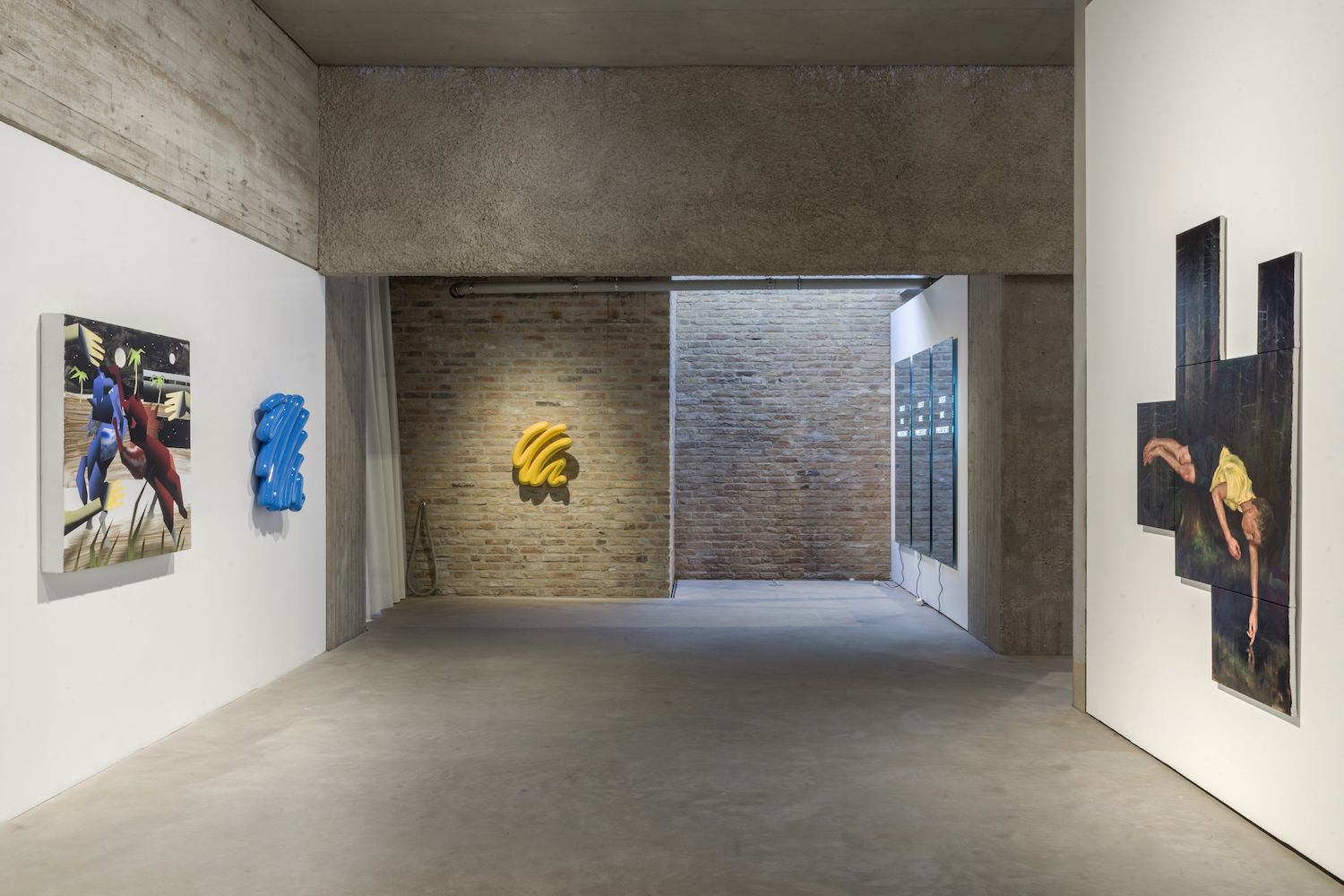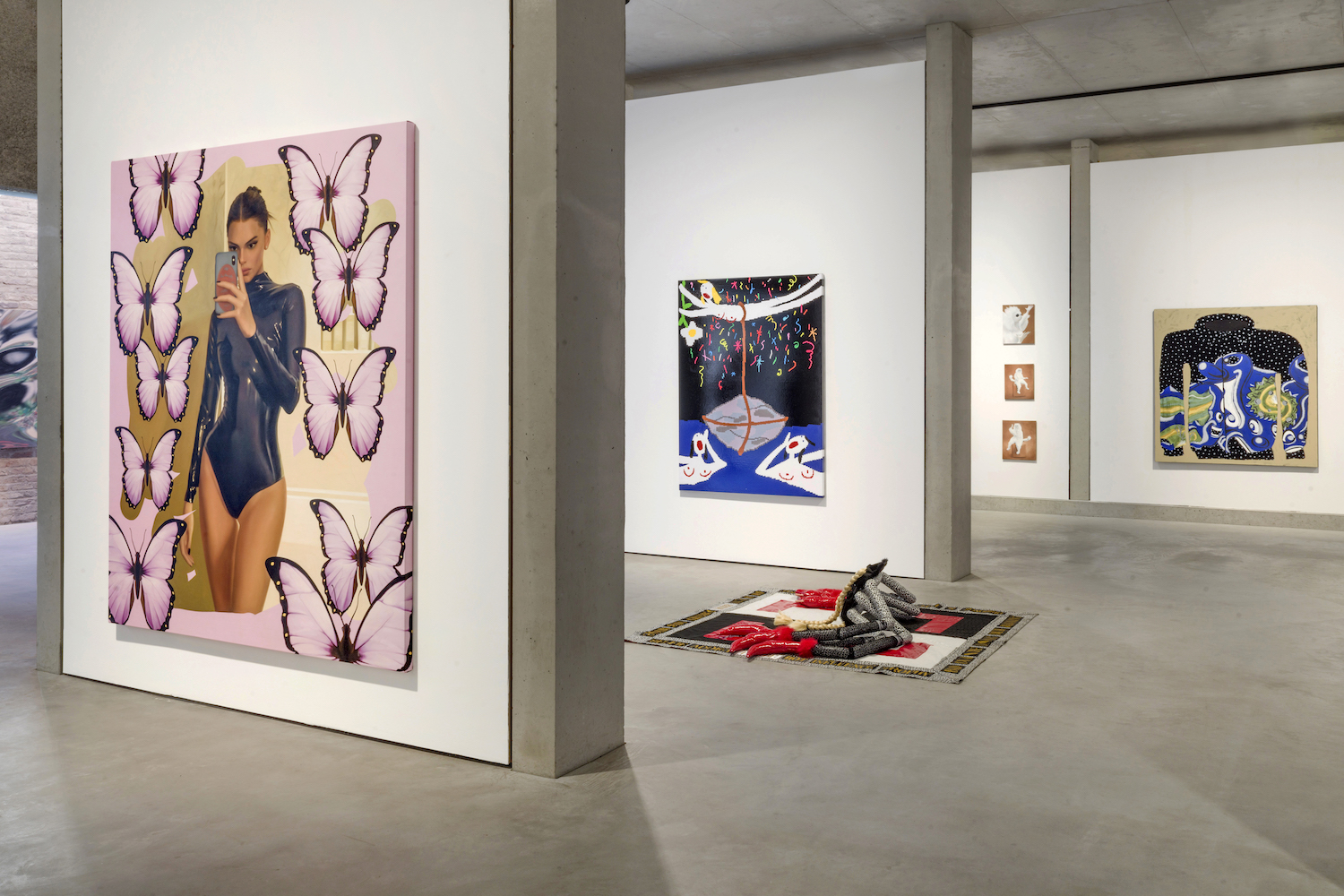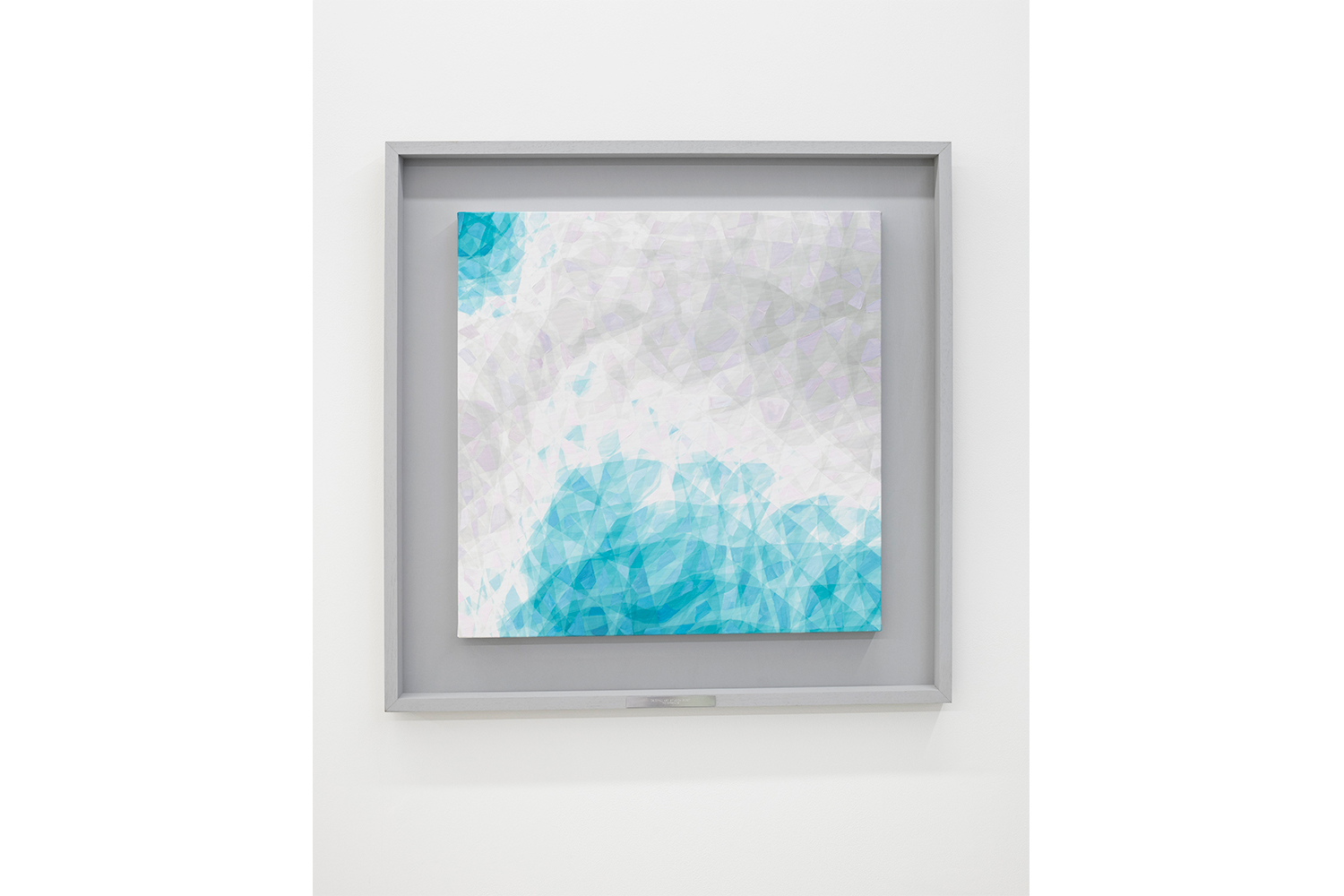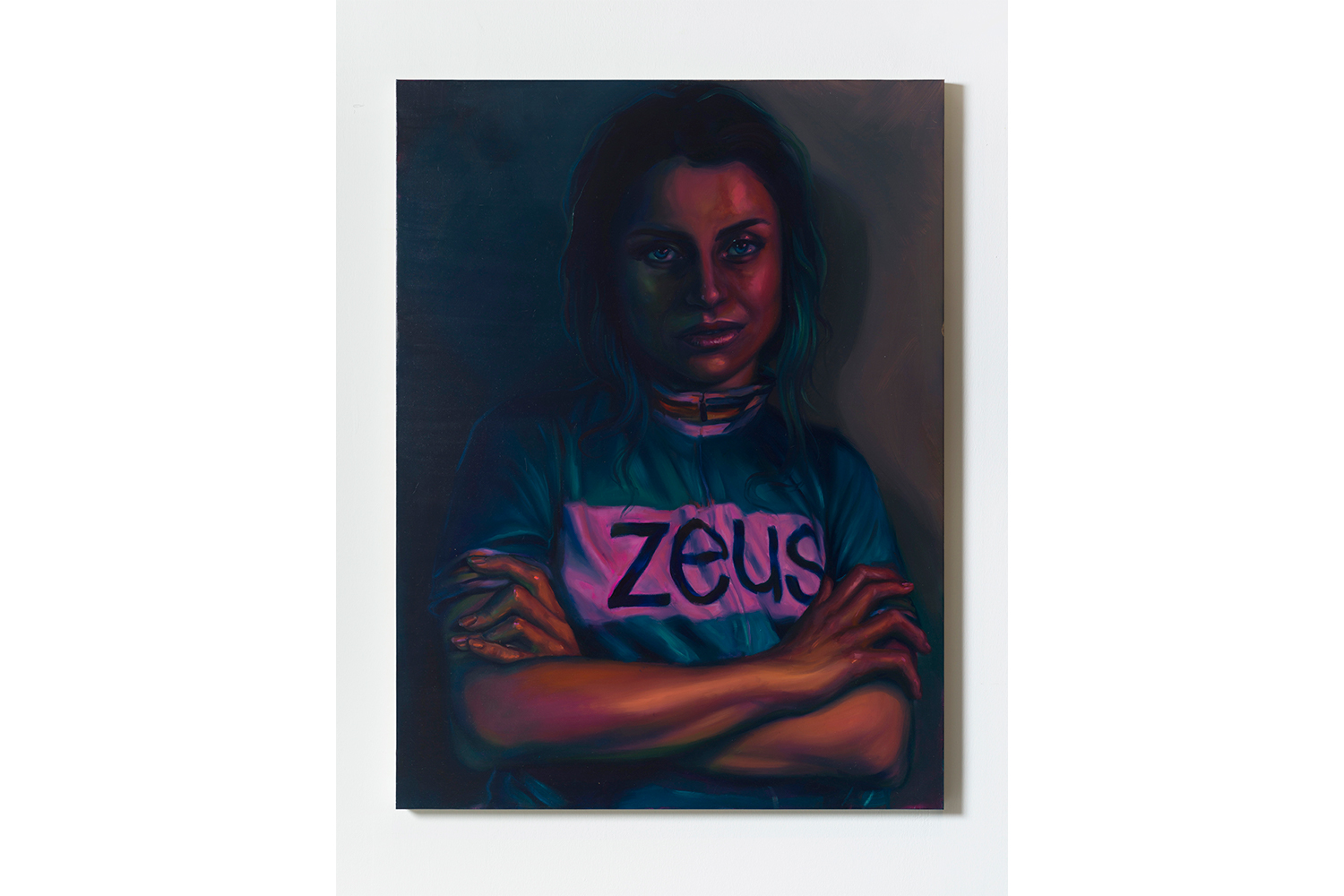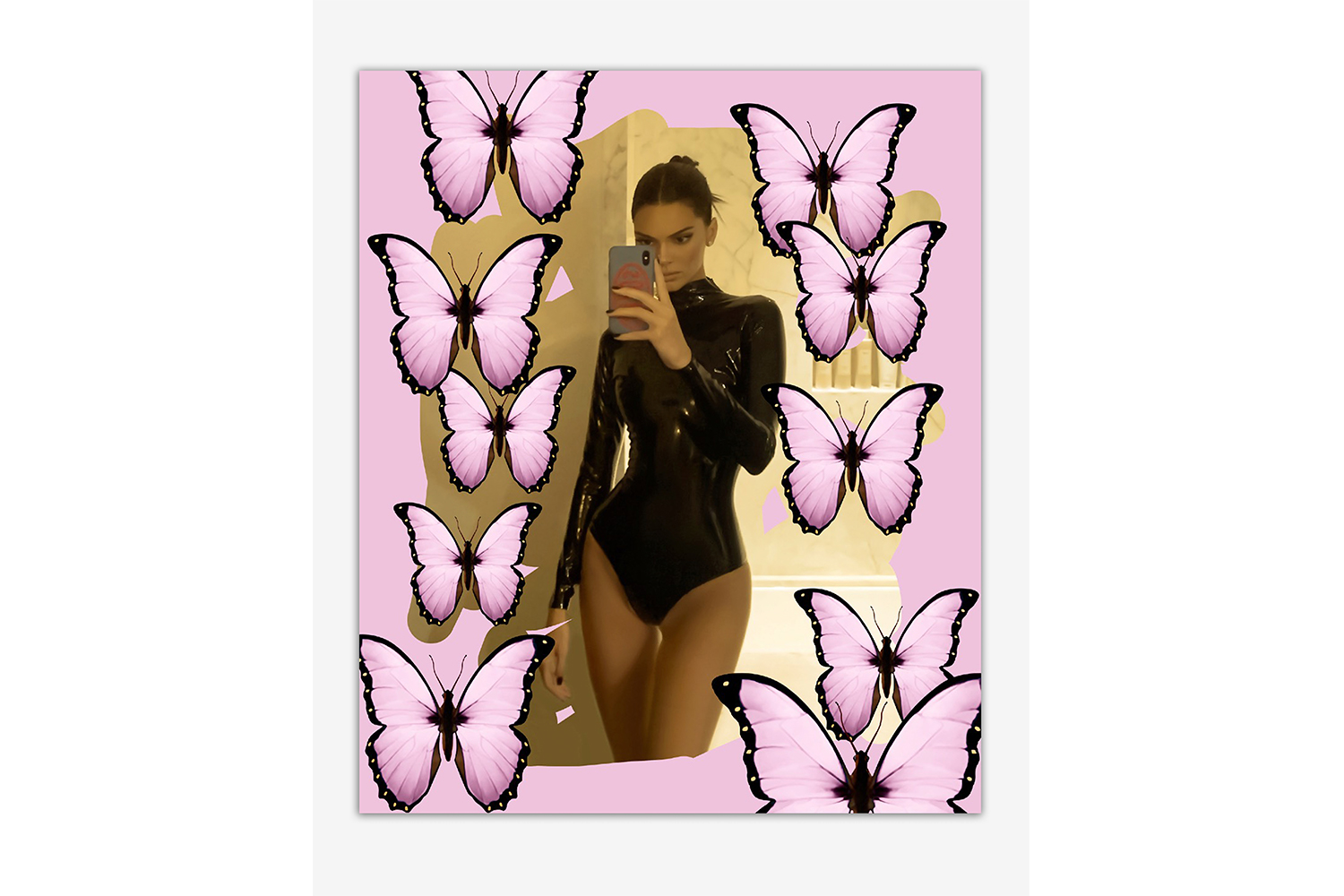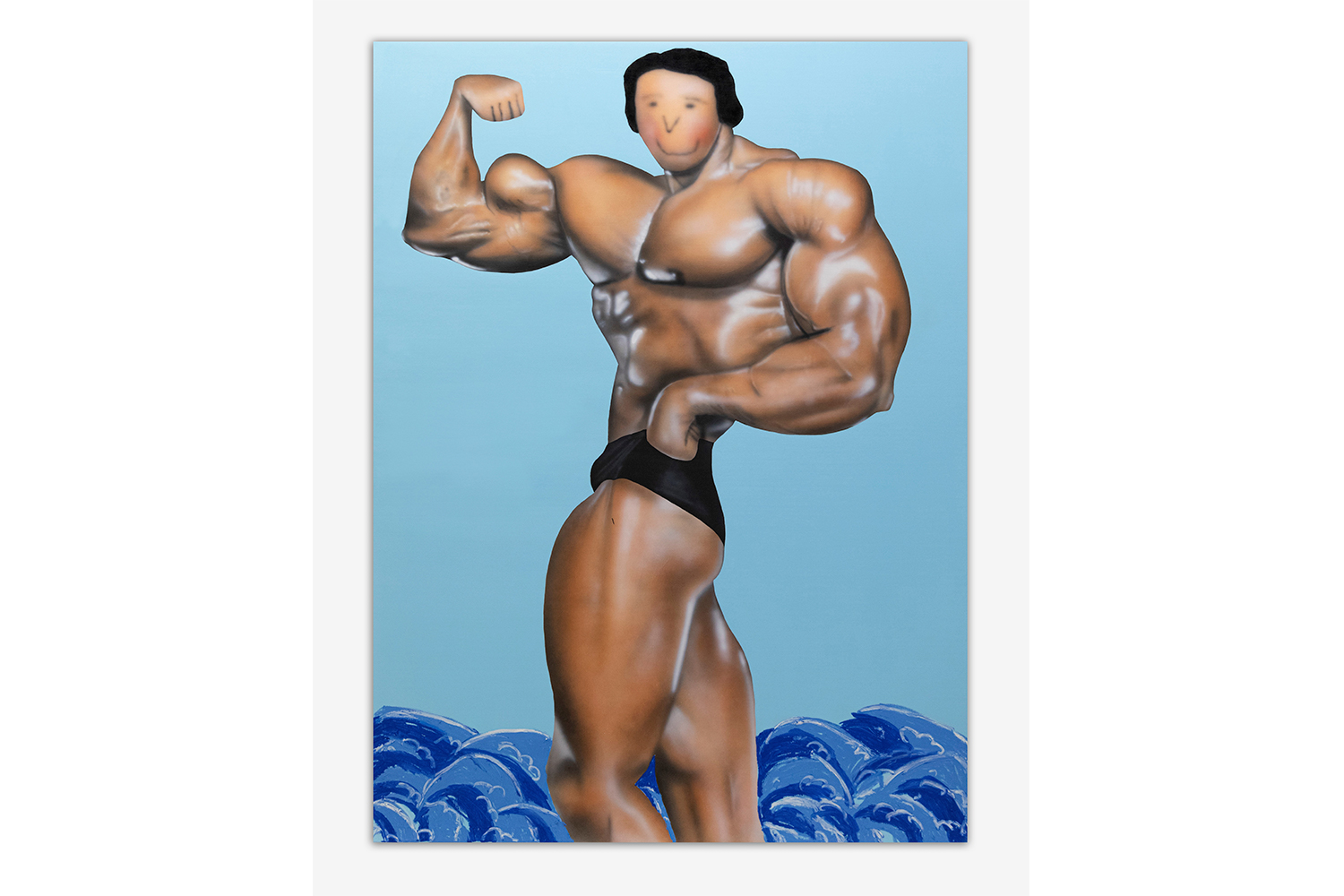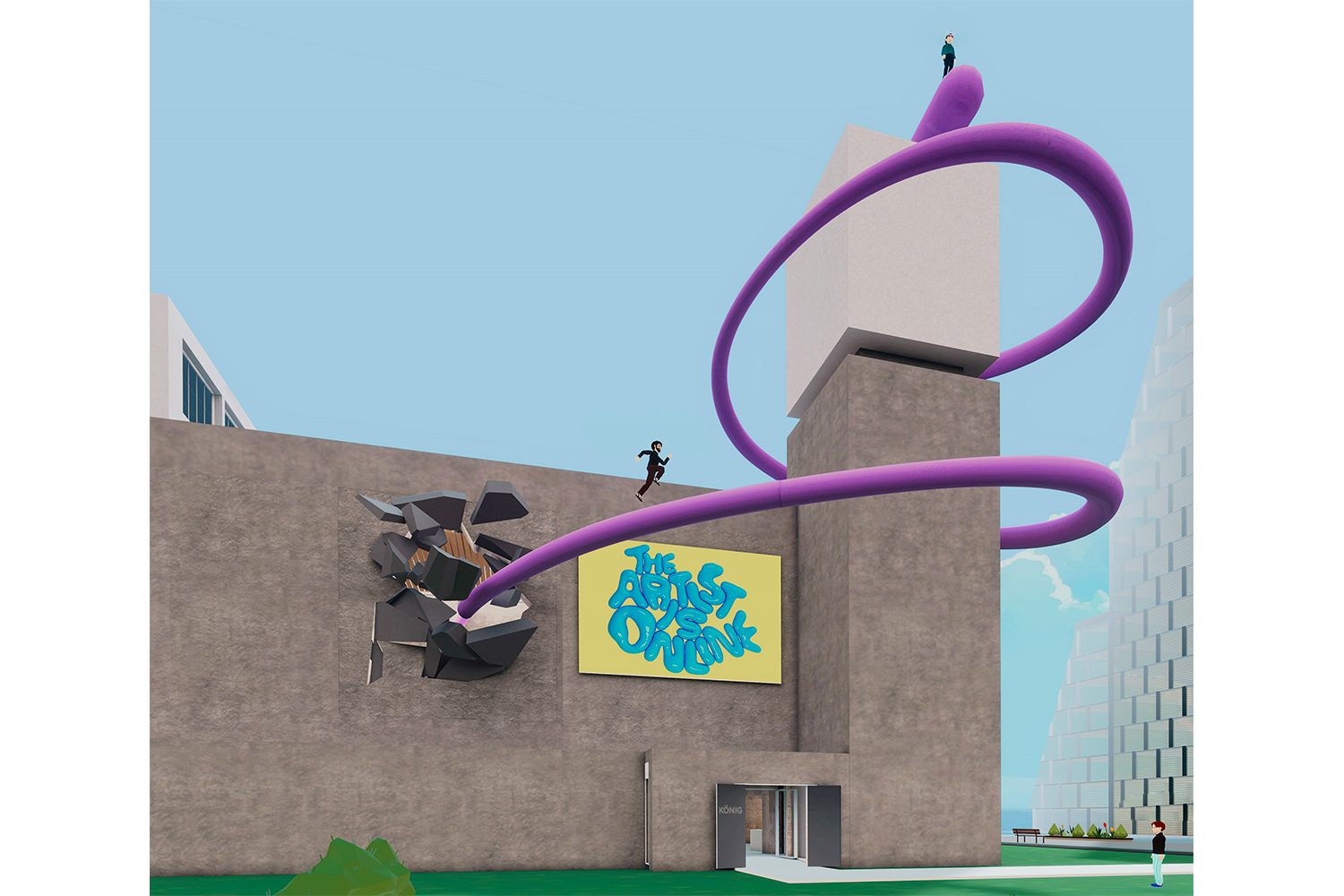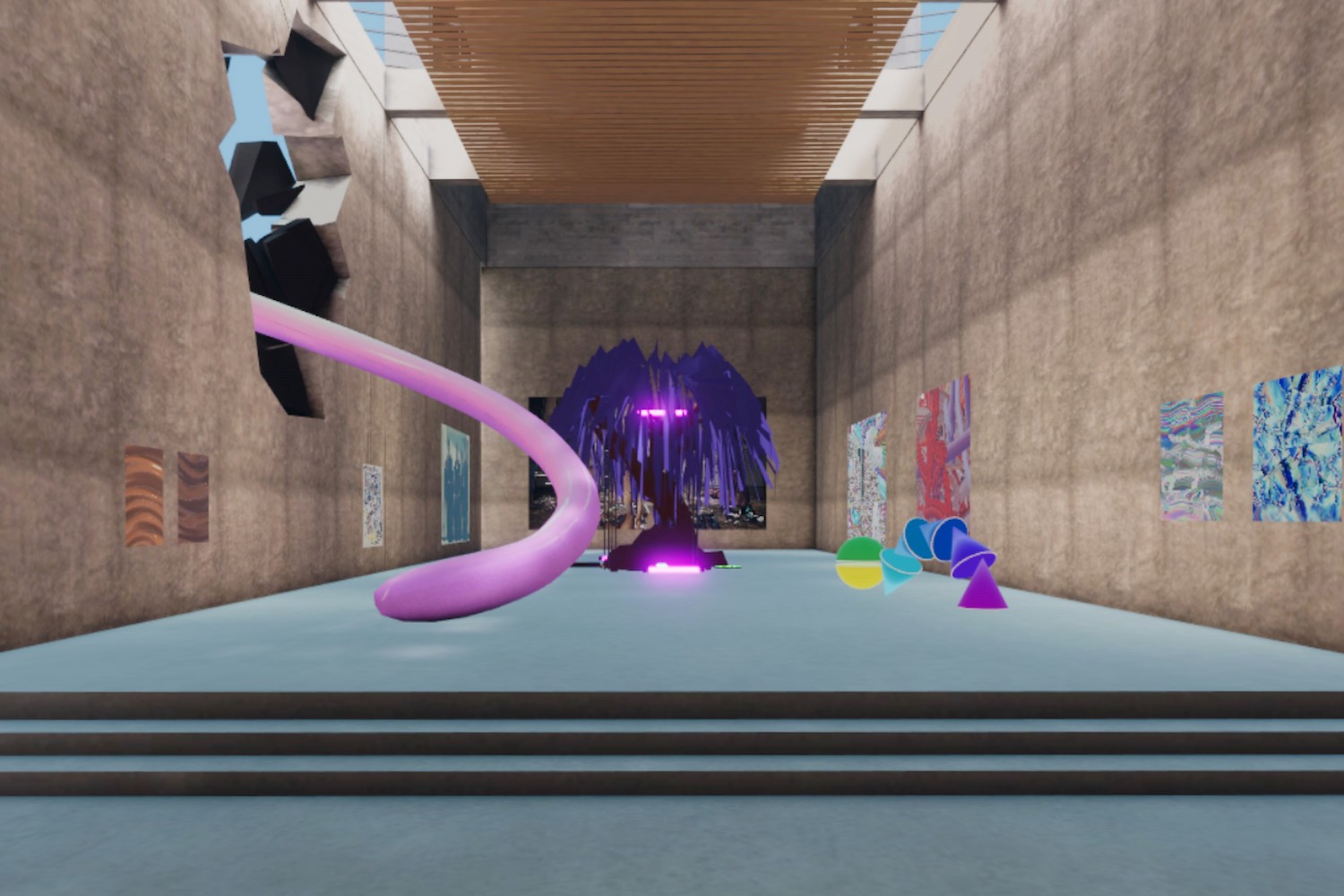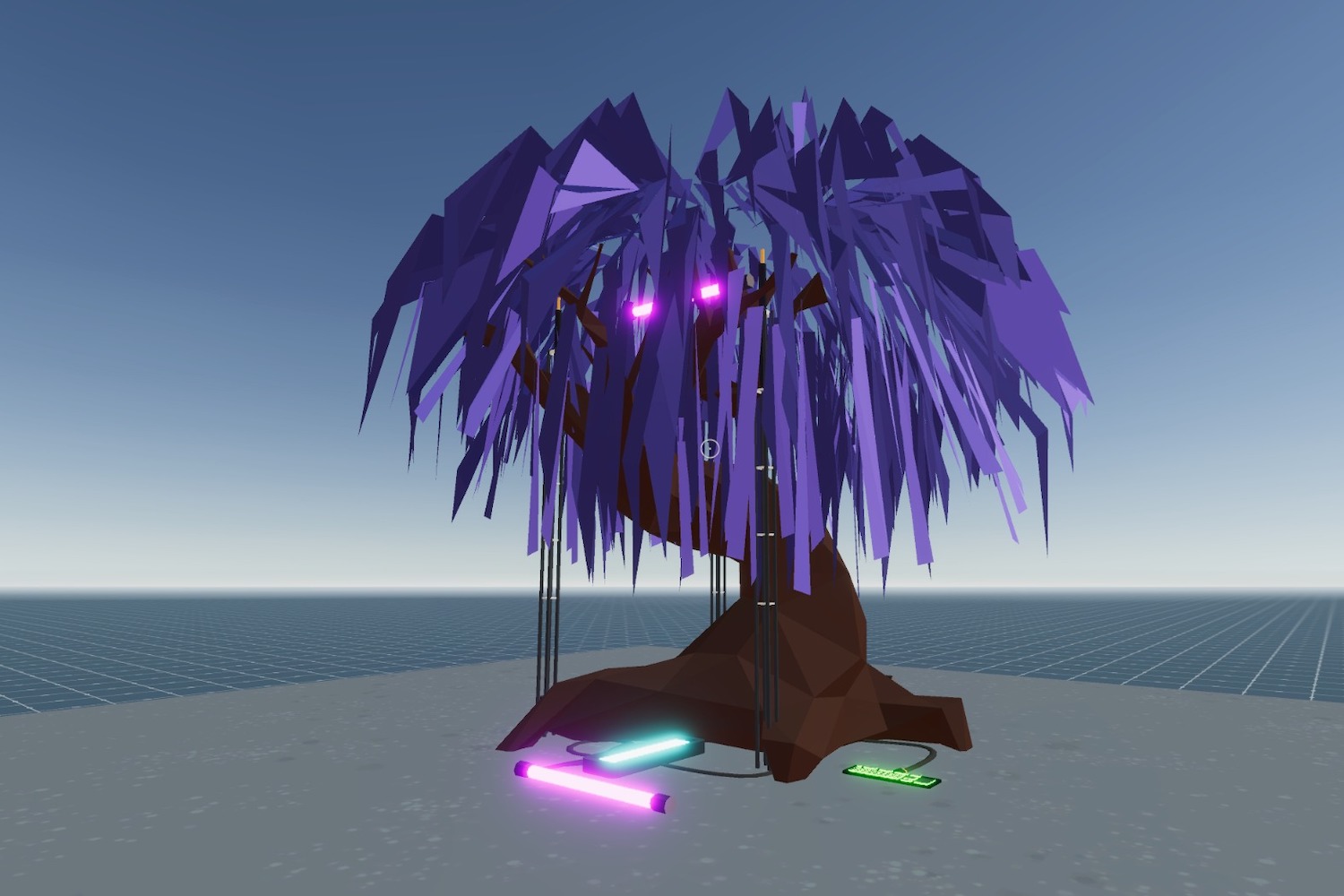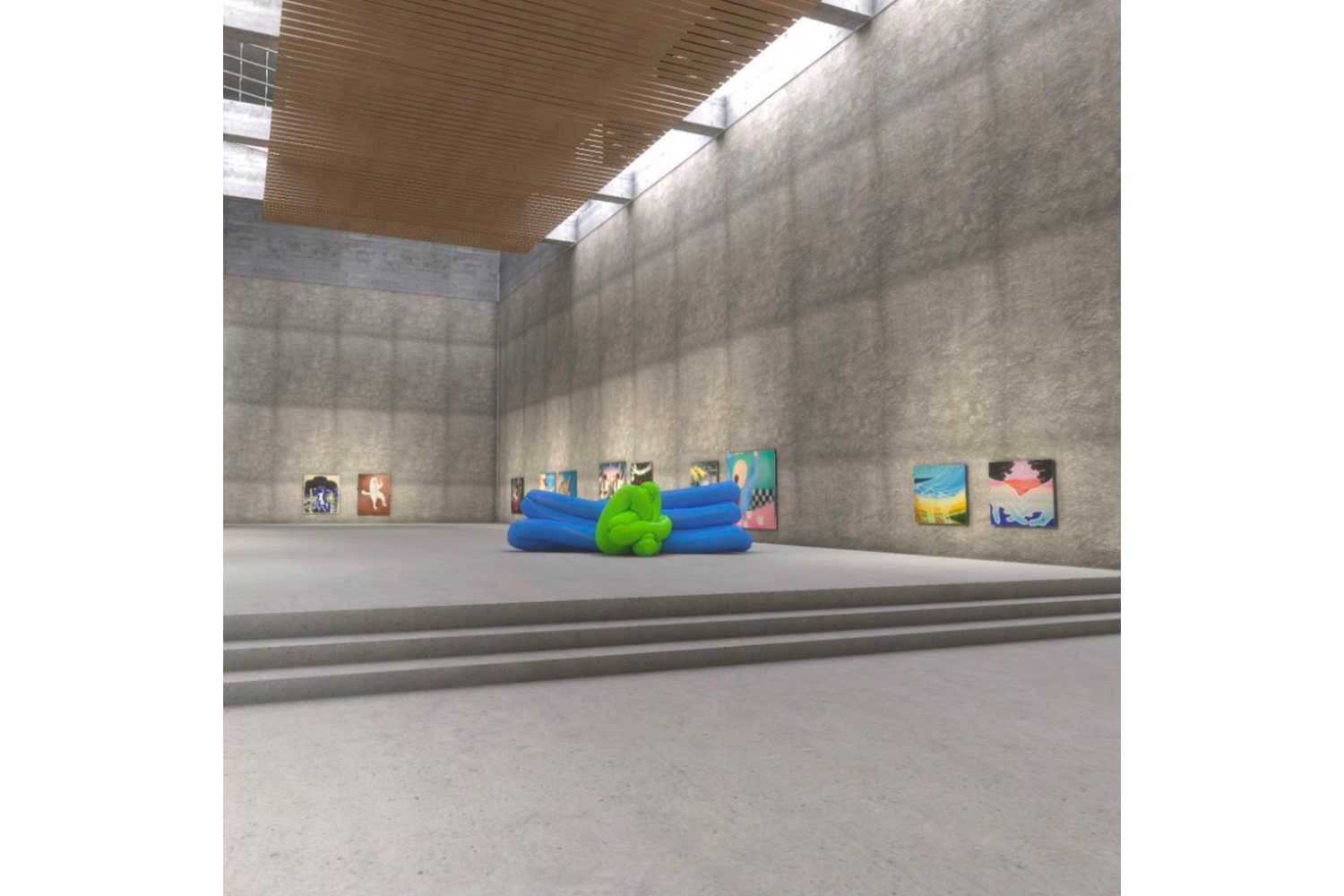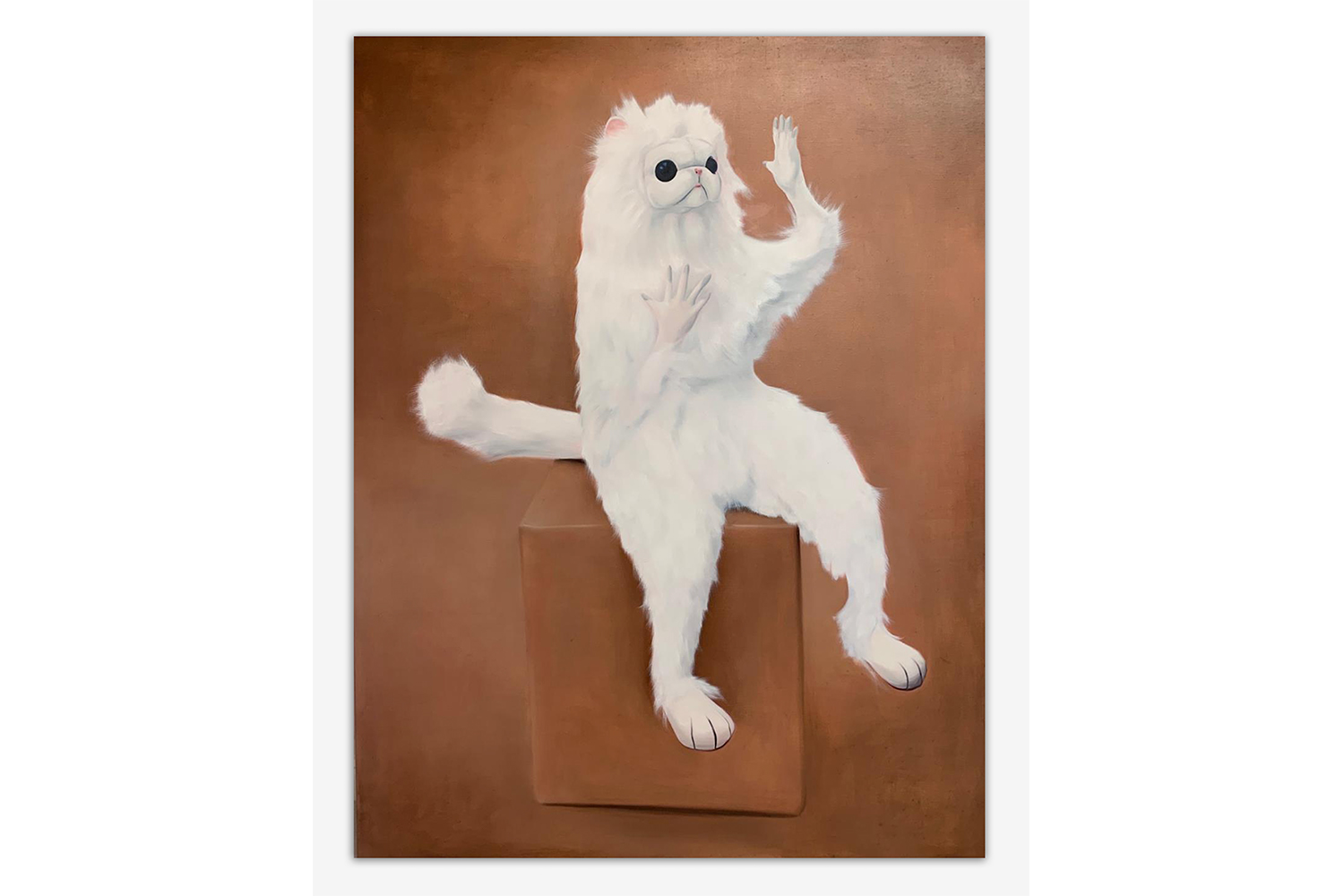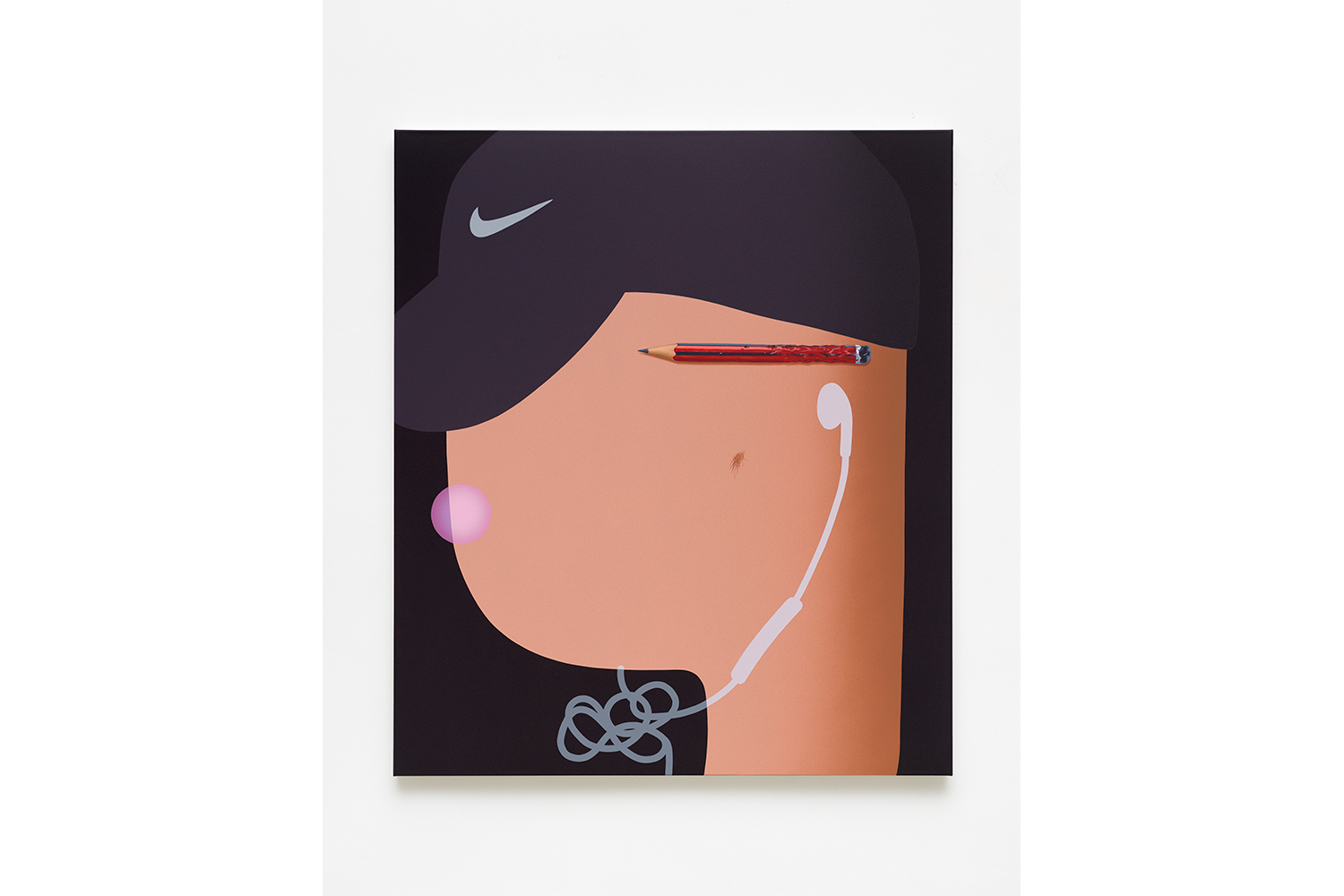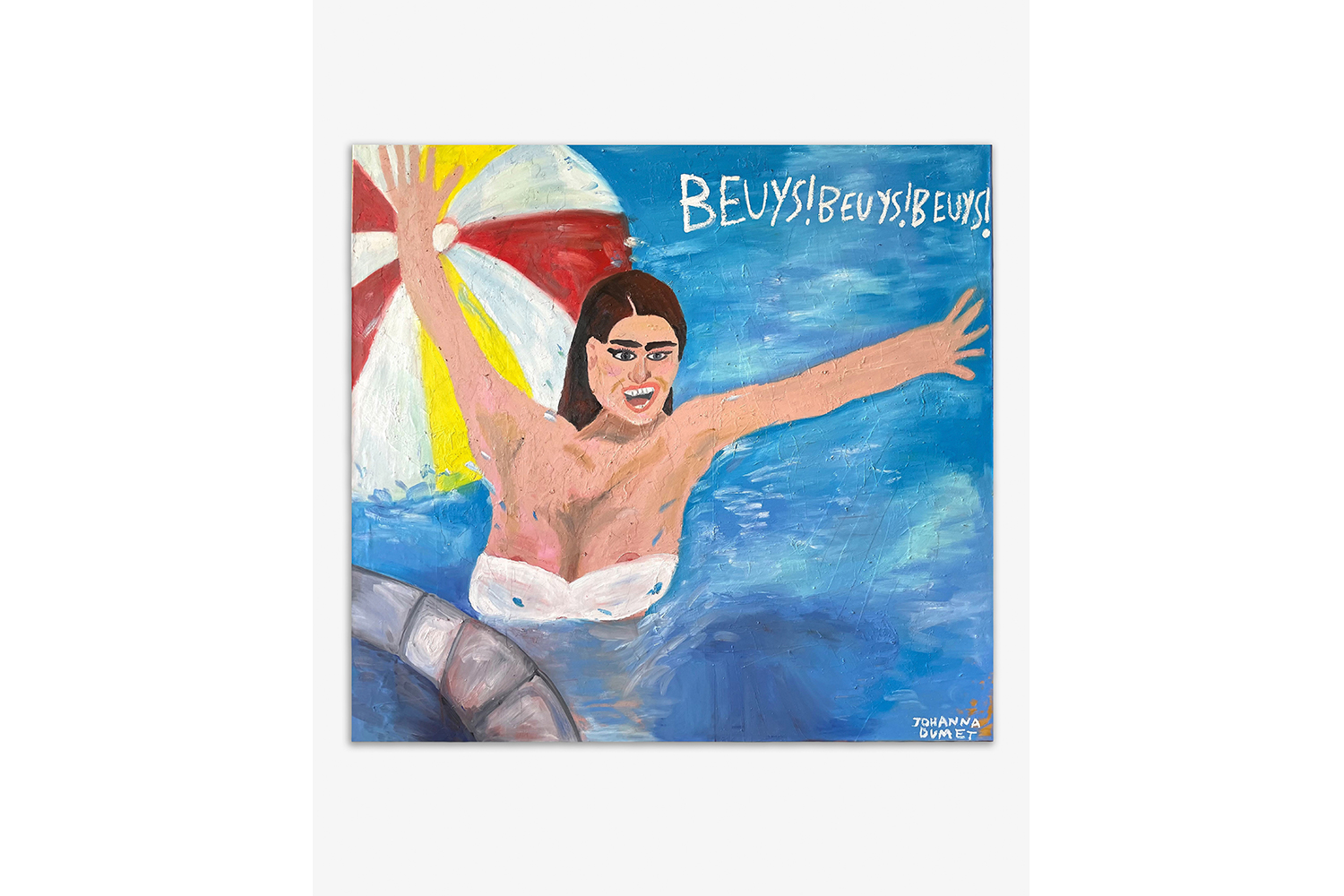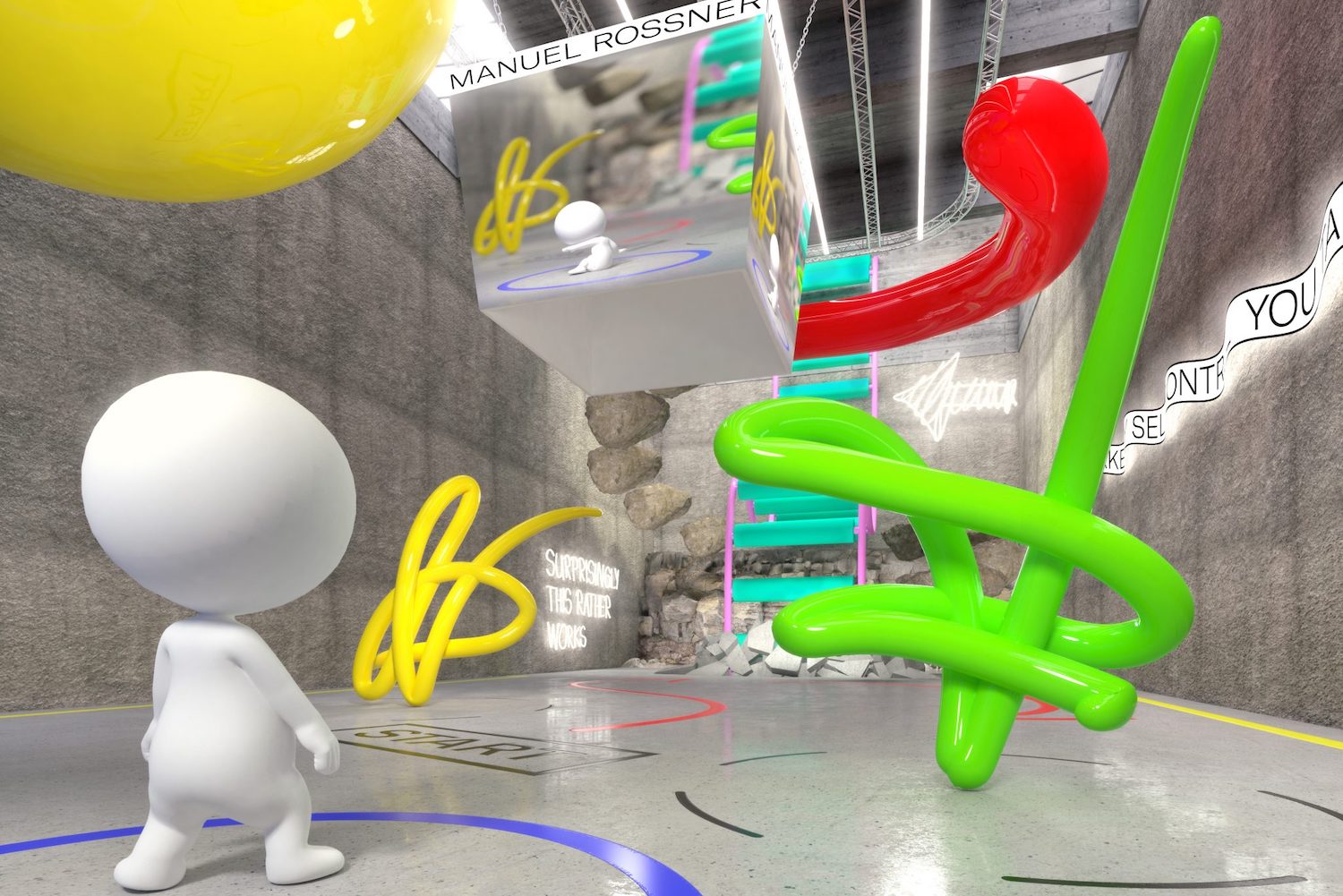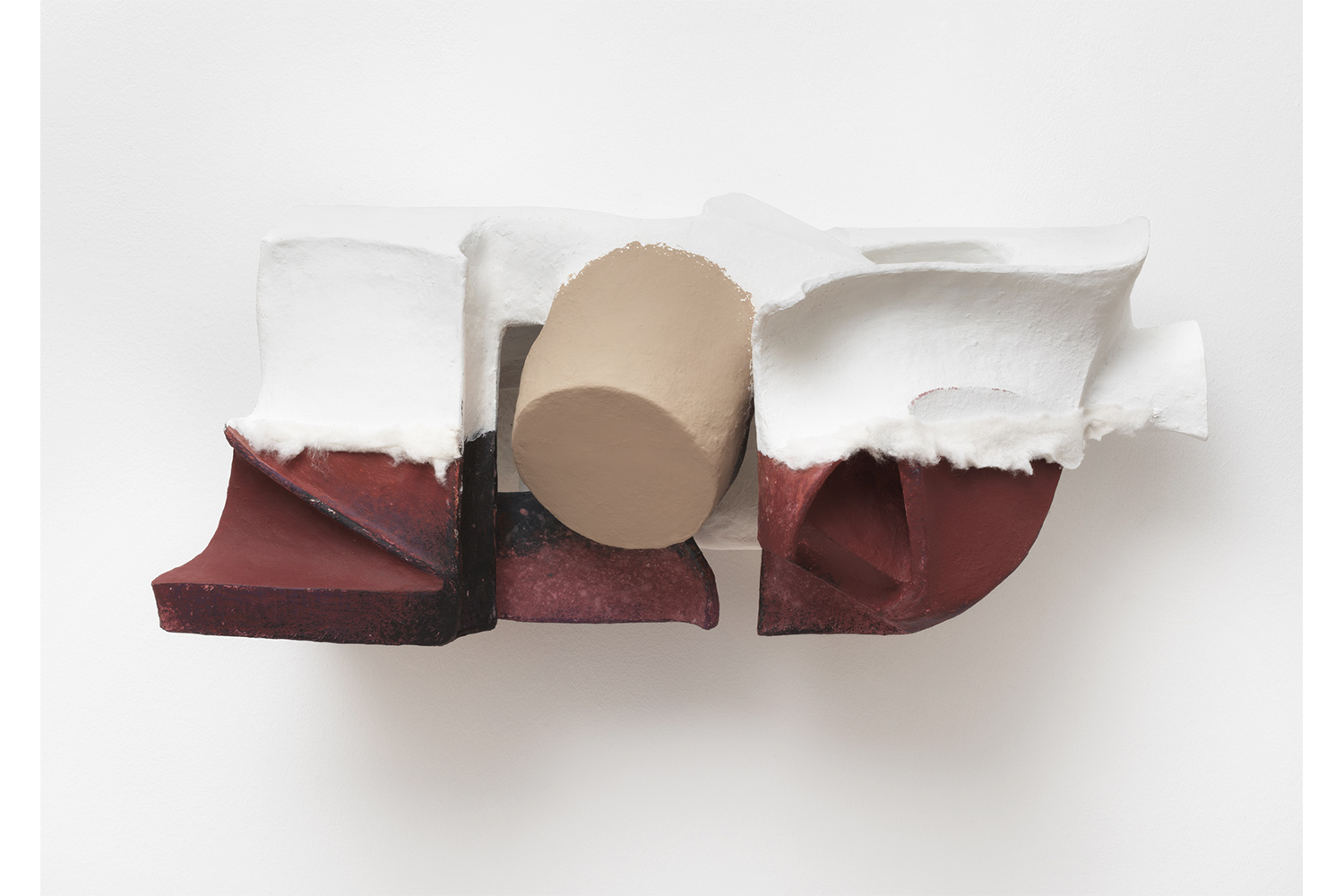In recent years, border traffic between contemporary art and new media has done little more than inject periodic shots of “newness” into art’s institutional zones. Just as capitalism threatens to encase all culture, so contemporary art assimilates any creative disruption. Until now it seems.
Curated by Anika Meier and Johann König, “The Artist Is Online” is, first and foremost, a show of paintings, with artists from Maja Djordjevic to Aaron Scheer afforded “augmented” extensions in virtual reality. Owing to the pandemic’s flattening of all art experience online, König secured virtual real estate for their second showroom. Situated on a newly rented plot of Decentraland — a VR world powered by the Ethereum blockchain — artist Manuel Rossner duplicated König’s Berlin space to suit the surge of blockchain-based NFT Art. Issuing NFTs (non-fungible tokens) for digital artifacts renders them verifiably scarce, allowing their sale as one-of-a-kind or limited editions. This March, Christie’s sold its first NFT-based artwork, accepting payment in cryptocurrency. König has followed Christie’s example by hosting an auction on OpenSea, making available the show’s NFTs at budget prices (starting at 0.5 ETH).
The blockchain ensures a playful frame. Rossner’s looped animations Drop Sculpture and Drip Painting (both 2021) present candy-colored geometries that weigh into one another or melt away. Sarah Slappey’s oil paintings tap into similar erotic abstractions. In Black Pearls II (2020) alabaster body parts form ornamental compositions in which manicured hands squeeze lactating breasts, evocative of Dalí’s hyperreal fantasies as well as pornographic close-ups. Strings of beads wrap around this orgy of limbs like rosaries, as if to imply that every fetishization comes at the price of subjugation.
Artists like Travis Fish, Chloe Wise, and Johanna Dumet, on the other hand, embrace fan art and commodity culture with unencumbered ease. Fish focuses on clothing’s totemic charge, here showing designer sweaters that build off prior portraits of American hip-hop trio Migos (whose debut single was titled “Versace”). Dumet blends branded items — from Vuitton to Aldi — into scenes of everyday (hipster) life, tapping into prefabricated imaginaries of what a good lifestyle looks like. If Naomi Klein’s battle cry “No Logo” still rings true, you are clearly neither generation Y nor Z. Even Banz & Bowinkel’s series Bodypaint (2020) borrows visual codes from advertising, with CGI splashes that call to mind mouth-watering milk jets hitting bowls of 1990s Froot Loops. This show bathes all experience — both physical and digital — in the commodifying logic of the digital age. It thereby explores a cultural subconscious shaped by brand campaigns and product placement at the moment of speculation’s latest iteration.


